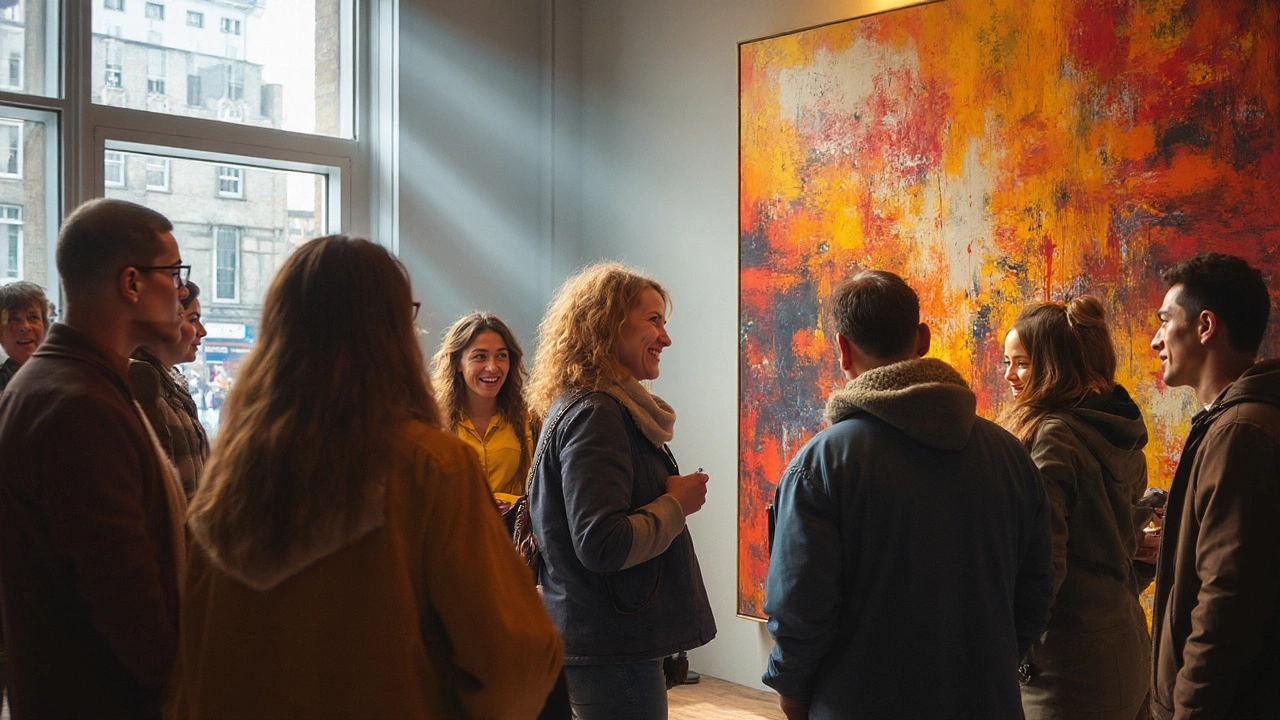Art Exhibition Inspiration: Ideas, Trends & Tips
Thinking about hosting an art exhibition? You’re not alone – galleries, pop‑up spaces and even backyard events are booming. Whether you’re a seasoned curator or a first‑time organizer, the right plan can turn a simple show into a buzz‑worthy experience.
Pick a Theme That Sparks Conversation
The easiest way to grab attention is to choose a clear, compelling theme. It could be “Local Landscapes”, “Abstract Colors” or “Art Meets Tech”. A strong theme gives artists a direction and gives visitors something to talk about. Keep the theme broad enough to attract diverse works but focused enough to feel cohesive.
When you settle on a theme, start gathering artists who fit. Reach out on social media, local art schools or community boards. Most creators love exposure, so offering a modest fee or free entry can be a win‑win.
Venue, Lighting & Layout Matter
Location sets the mood. Traditional galleries offer built‑in lighting, but don’t overlook unconventional spots like lofts, cafés or even a marquee tent. A marquee can give you a stylish, weather‑proof space without the high cost of a permanent hall.
Good lighting is crucial. Aim for a mix of ambient light and spotlights that highlight each piece without causing glare. If you’re outdoors, consider LED panels that mimic natural light and keep the exhibit bright after sunset.
Plan the layout like a story. Start with an eye‑catching piece at the entrance, then guide visitors through groups that flow logically. Leave breathing room so guests can linger without feeling cramped.
Don’t forget practical details – clear signage, wheelchair access and a simple way for visitors to leave feedback. A short guest book or QR code survey can give you valuable insights for the next show.
Food and drink can boost the vibe, too. A small catering station or local coffee stall makes the event feel social and encourages longer stays. Just make sure the refreshments don’t distract from the artwork.
Promotion is another key piece. Use Instagram Stories, Facebook Events and local newsletters to spread the word. A teaser video showing snippets of the artworks or a behind‑the‑scenes setup builds excitement.
Offer early‑bird tickets or a “first‑look” preview for members of your mailing list. This creates a sense of exclusivity and can fill seats before the official launch.
On the day of the exhibition, have a brief opening talk. Explain the theme, introduce the artists and share any interesting backstories. A personal touch makes the experience memorable.
After the event, share photos and highlights online. Tag the artists and ask them to repost. This extends the life of your exhibition and helps everyone involved gain more exposure.
Finally, measure success. Count tickets sold, collect visitor feedback and review any sales made. These numbers help you decide what worked and what to tweak for the next show.
Budget doesn’t have to break the bank. List every cost – venue, lighting, marketing, catering and artist fees. Look for sponsors or local businesses willing to trade exposure for support. Even a small discount from a lighting supplier can free up cash for better promotion.
Don’t overlook insurance. A public liability policy protects you if a visitor trips or if an artwork gets damaged. Many insurers offer short‑term cover tailored for pop‑up events, so you can stay protected without a long‑term commitment.
With the right theme, venue, lighting and promotion, your art exhibition can become the talk of the town. Ready to start planning? Grab a notebook, sketch out ideas and watch your vision come to life.
